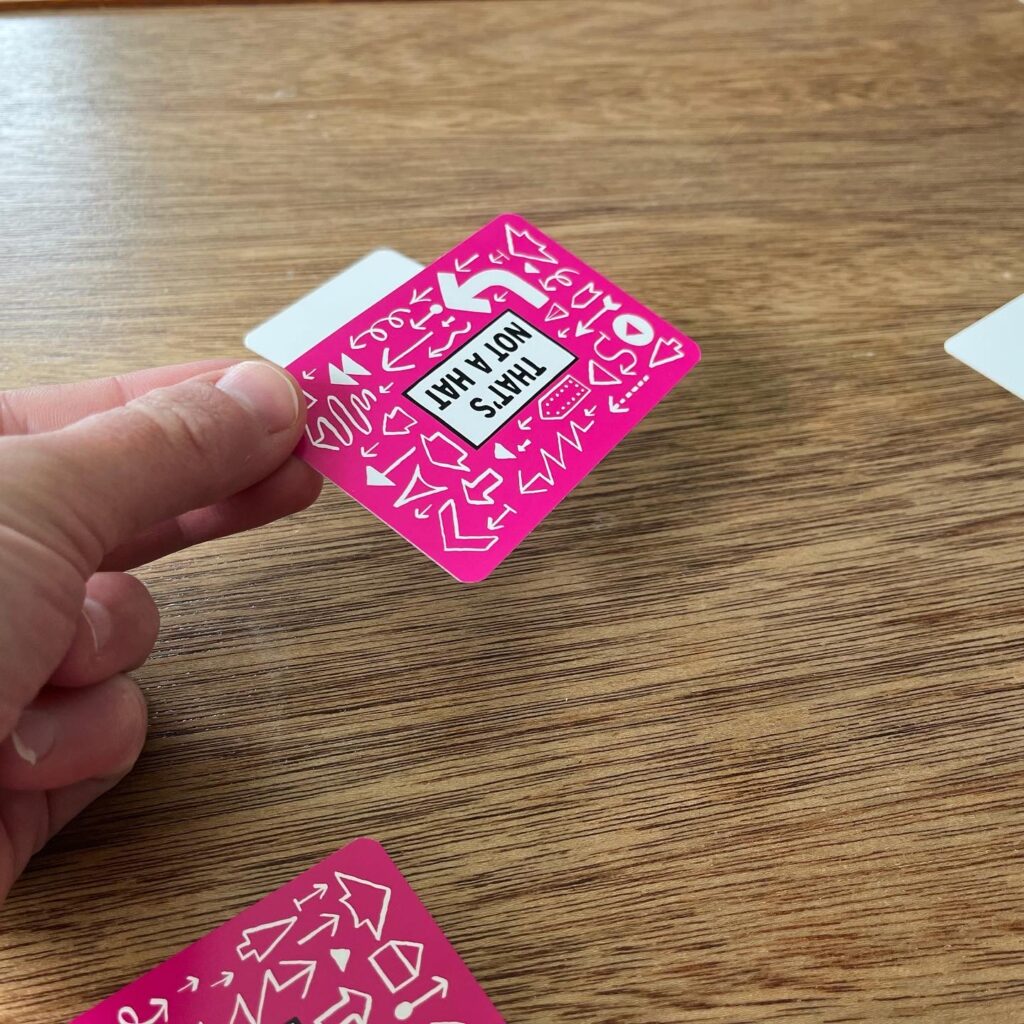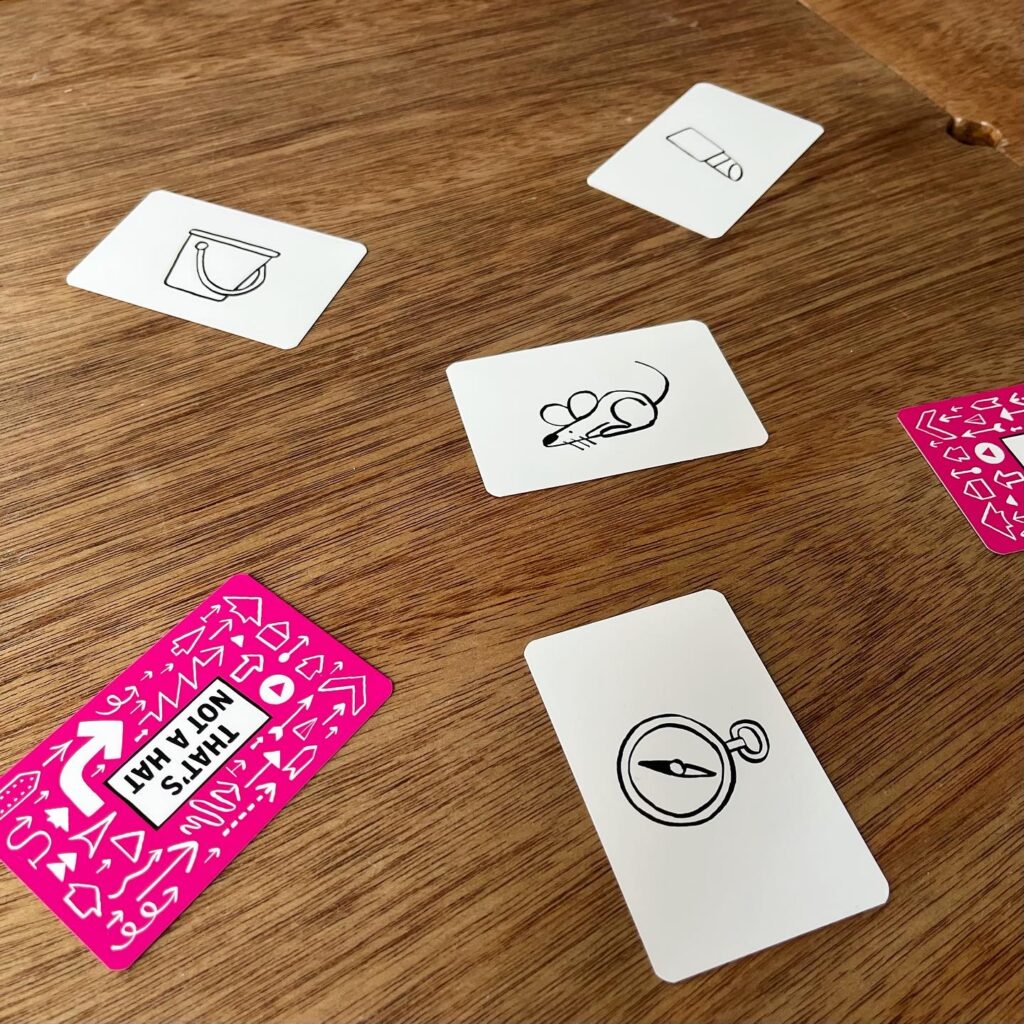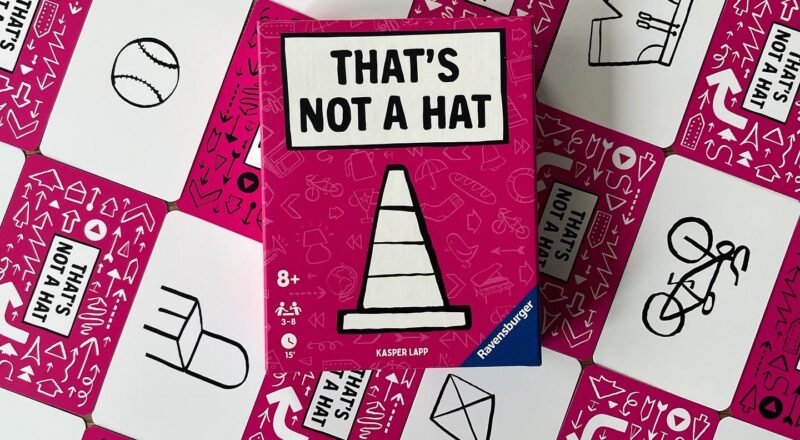That’s Not a Hat! Can a traffic cone be a hat? Oh, yes it can indeed! I once lived in Glasgow in Scotland. In Glasgow there stands a prominent statue of Arthur Wellesley, the first Duke of Wellington (The Duke of Wellington) riding majestically on his horse. I honestly did not know exactly who this Duke was, but I did know this statue due to an almost permanent worn orange cone sitting on top of the head of the duke (and sometimes the horse). Glasgow locals once thought it would be funny to place this cone on the statue’s head. Several attempts to remove the cone or prevent its placement were in vain: the traffic cone kept returning. By now, the statue is no longer known for the Duke of Wellington himself, but rather for statue bearing the cone. The cone suits the dear Duke very well and provides proof that a traffic cone can indeed be a hat.

In this short card game, players are going to deliberately and unconsciously lead each other astray by ‘gifting’ each other cards. Where sometimes you think you are getting a hat, it could all too well be that you are getting traffic cone (or a handbag, a frog, etc.).
At the beginning of the game, each player gets a gift (card) in advance, which is placed on the table in front of that player. In the middle of the game comes a draw pile. The first player takes the top card and shows it to all the other players. This card is then passed around (the back of cards indicates in which direction cards should be passed around). The player who passes a card must say which card it is. The acquiring player must now accept the gift (if this player thinks the statement is correct) or refuse the gift (if this player suspects the other player is talking nonsense). If a player accepts a gift, that player must pass his card that is still in front of him closed and again make a statement about the gift. This continues until a player refuses a gift. By refusing gifts, the player who was wrong can receive a minus point (by setting the last gift aside). At three minus points, the game is over. After a gift has been refused and a player still does not have three minus points, a new gift is taken from the central draw pile and the game continues.
This game concept may seem very easy. Perhaps too easy? Everyone can see each other’s gifts at the beginning of the game, and each gift drawn from the central draw pile is also shown to everyone. However, you quickly forget which gifts are where because the cards are dealt different ways, making it difficult to keep track of which cards are where. This makes That’s Not A Hat a good memory trainer and hilarious party game that plays extremely fast and very simple.





